Reasons to travel to Arches National Park
Arches National Park, located in eastern Utah, is a breathtaking natural wonder that showcases the remarkable power of erosion and geology. Spanning over 76,000 acres, the park is home to more than 2,000 natural stone arches, making it a haven for photographers, outdoor enthusiasts, and nature lovers alike. The park’s most iconic feature is the Delicate Arch, a freestanding arch that has become a symbol of the state of Utah and a must-see for visitors.
Within Arches National Park, visitors are treated to a diverse landscape characterized by towering sandstone fins, towering monoliths, and contrasting colors that change with the shifting sunlight. The park offers a variety of trails for different skill levels, allowing visitors to explore the unique rock formations up close. The Fiery Furnace, an intricate maze of narrow sandstone canyons, provides an adventurous and immersive experience for those seeking a more challenging hike.
Apart from the stunning geological formations, Arches National Park is also home to a rich array of flora and fauna. Visitors may spot desert bighorn sheep, mule deer, and a variety of bird species as they explore the park. Stargazing is another highlight of the park, as its remote location away from light pollution provides exceptional opportunities to witness the brilliance of the night sky.
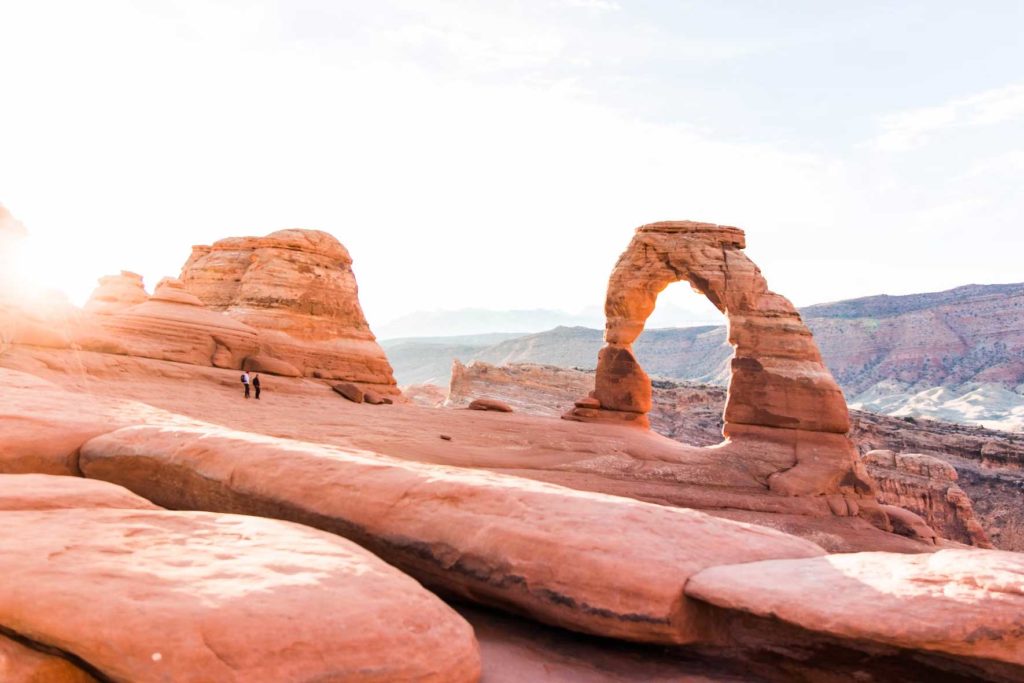
Visiting Arches National Park
Why you should go to Arches National Park
Arches National Park is famous for its stunning natural arches, which number over 2,000 and are among the highest concentration of such formations in the world. These arches, created through millions of years of erosion and weathering, are a true marvel to behold. The park’s most iconic arch, the Delicate Arch, has become an emblem of the state of Utah and a symbol of natural beauty.
The unique geological formations found in Arches National Park make it a must-visit destination. The towering sandstone fins, balanced rocks, and monoliths create a surreal and otherworldly landscape that will leave visitors in awe. The park’s diverse palette of colors, from vibrant reds to deep oranges, further adds to its visual appeal. Exploring the park’s trails and witnessing these geological wonders up close is a truly unforgettable experience.
Additionally, Arches National Park offers a range of outdoor activities and opportunities for adventure. Hiking through the park’s trails allows visitors to immerse themselves in its natural beauty and discover hidden gems along the way. The Fiery Furnace, with its narrow canyons and labyrinthine passages, presents a thrilling challenge for more experienced hikers. Furthermore, the park’s remote location provides excellent conditions for stargazing, offering a breathtaking view of the night sky unimpeded by light pollution.
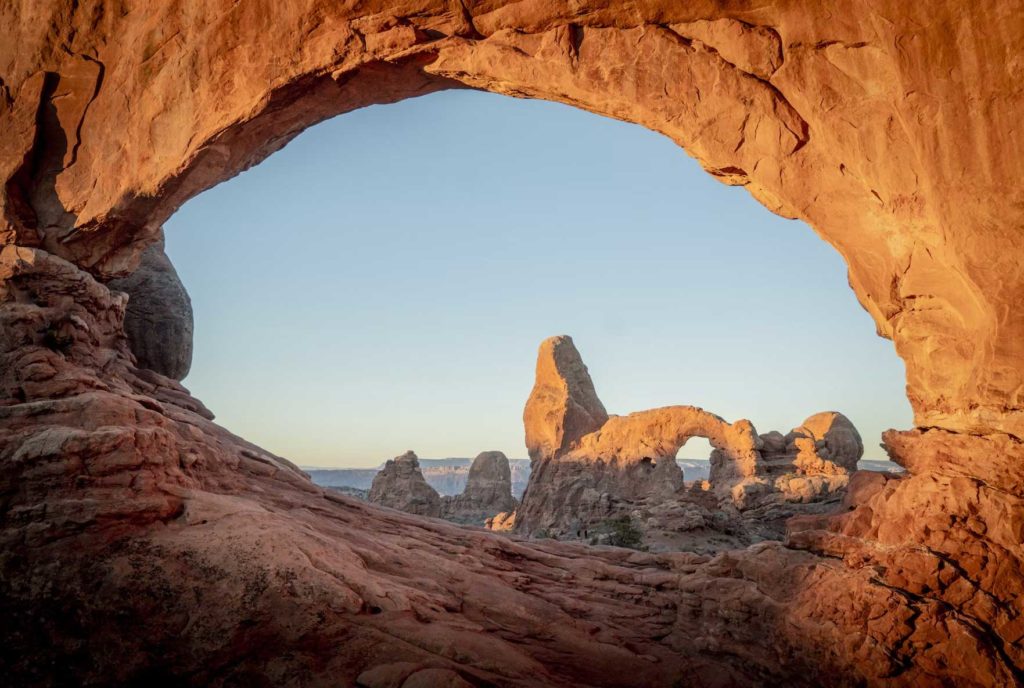
The best time to travel to Arches National Park
The best time to travel to Arches National Park largely depends on personal preferences and the kind of experience you seek. However, the park’s peak seasons for visitors are spring (March to May) and fall (September to October). During these months, the weather is generally pleasant, with mild temperatures and low humidity, making it ideal for outdoor activities such as hiking and exploring the park’s trails.
Springtime in Arches National Park brings the blooming of wildflowers, adding bursts of color to the already stunning landscape. The temperatures are comfortable, ranging from the 60s to the 80s Fahrenheit (15 to 30 degrees Celsius), allowing for enjoyable daytime exploration. Keep in mind that spring break and Easter holidays can bring increased crowds, so plan accordingly.
Fall is another popular time to visit due to cooler temperatures, typically ranging from the 50s to the 70s Fahrenheit (10 to 25 degrees Celsius). The park is less crowded compared to the spring season, allowing for a more tranquil and immersive experience. The autumn colors of the foliage in the surrounding area create a picturesque backdrop, enhancing the park’s natural beauty.
It’s worth noting that summers in Arches National Park can be scorching, with temperatures often exceeding 100 degrees Fahrenheit (38 degrees Celsius). If you plan to visit during this season, be prepared for extreme heat and take necessary precautions, such as carrying ample water, seeking shade, and avoiding strenuous activities during the hottest parts of the day.
Winter can also be a unique time to visit, especially for those seeking solitude and a different perspective of the park. However, be aware that winter weather in the area can be unpredictable, with occasional snowfall and colder temperatures. Some trails may be icy or closed, so it’s important to check the park’s website for updates and plan accordingly.
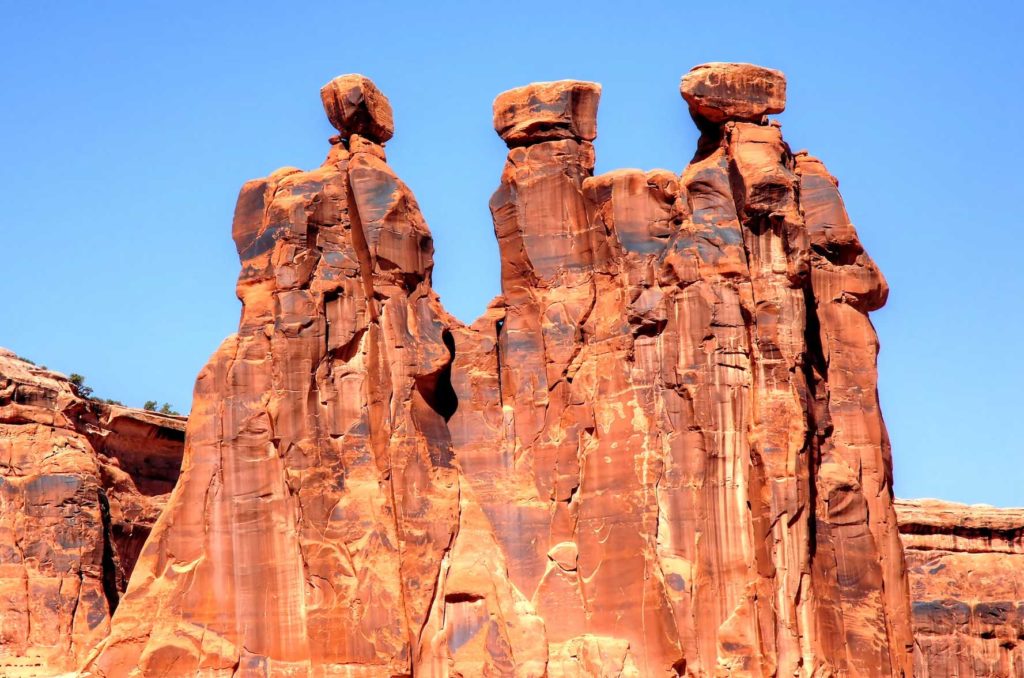
Entry point to Arches National Park
Beware that you need to schedule your visit in advance. See https://www.nps.gov/arch/index.htm the offical website for additional info.
Arches National Park has a single main entrance located along US Highway 191, about 5 miles (8 kilometers) north of Moab, Utah. This entrance is known as the Arches National Park Visitor Center. To access the park, you can follow the signs on Highway 191 and turn onto the entrance road, which leads directly to the visitor center.
From the visitor center, the park road continues deeper into the park, providing access to various trailheads and points of interest. The most popular attractions, such as the Delicate Arch and the Windows Section, are easily accessible from the main road.
It’s important to note that due to the park’s popularity, especially during peak seasons, there may be lines and wait times at the entrance gate. Arriving early in the morning or later in the afternoon can help avoid some of the congestion.
Once inside the park, there are several pullouts and parking areas along the main road where you can stop and explore different viewpoints and trailheads. Some trails require a short hike from the parking areas, while others, such as the Delicate Arch Trail, require a longer and more strenuous hike. Make sure to pick up a park map and trail guide at the visitor center to help plan your itinerary and navigate the park’s various attractions.
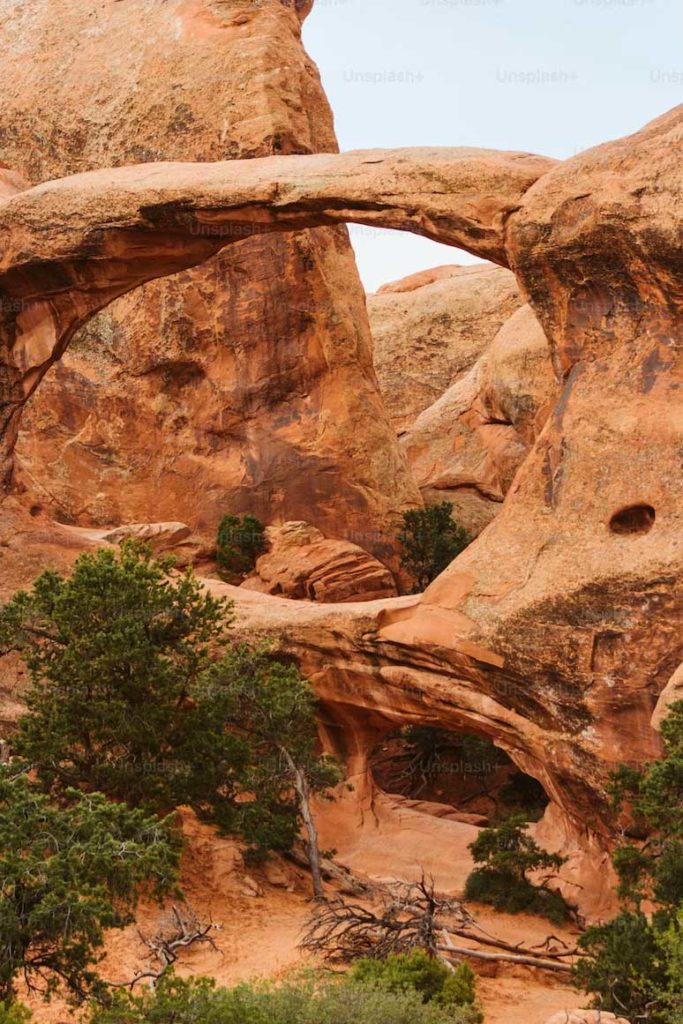
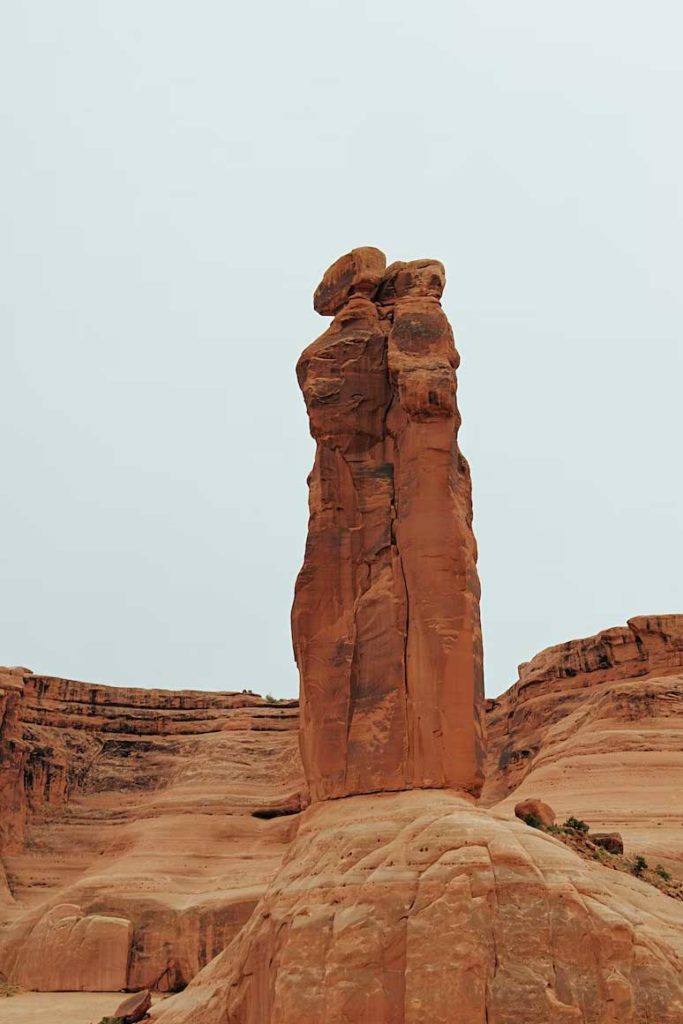
Park fees
the entrance fees for Arches National Park are as follows:
Private Vehicle: $30 for a 7-day pass. This fee grants access to the park for a private vehicle and its occupants.
Motorcycle: $25 for a 7-day pass. This fee allows entry for one motorcycle and its riders.
Per Person (Non-commercial vehicle): $15 per person for a 7-day pass. This fee applies to visitors arriving on foot, bicycle, or non-commercial organized groups (like a van or shuttle).
It’s important to note that these fees are subject to change. Additionally, there are annual passes and interagency passes available for purchase, which provide access to multiple federal recreation sites, including national parks, for a specified period.
For the most up-to-date and accurate information regarding entrance fees, it is recommended to visit the official website of Arches National Park or the National Park Service website.
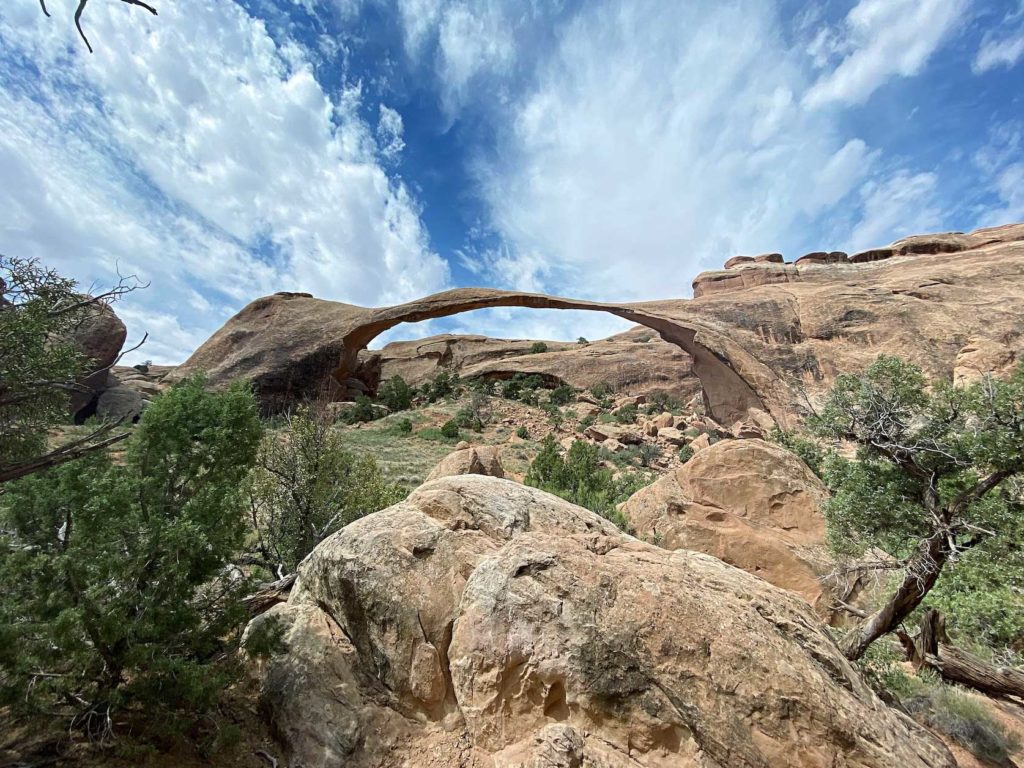
Must see in Arches National Park
Delicate Arch
Delicate Arch, the iconic symbol of Arches National Park, is a must-see attraction. This freestanding arch stands proudly against the backdrop of the stunning Utah landscape, reaching a height of 52 feet (16 meters). A hike to Delicate Arch offers a rewarding experience, with a moderate 3-mile (4.8 kilometers) round trip trail that takes you up close to this natural wonder. Witnessing the arch during sunrise or sunset is particularly breathtaking, as the warm hues of the sunlight enhance its beauty. Delicate Arch represents the resilience and magnificence of nature, leaving visitors in awe of its grandeur.
Landscape Arch
As one of the longest natural arches in the world, Landscape Arch is a remarkable sight to behold. Located in the Devils Garden area, this delicate and slender arch stretches approximately 290 feet (88 meters) in length. A relatively easy hike of 1.6 miles (2.6 kilometers) round trip will take you to a viewpoint where you can appreciate the impressive span of this arch. Due to its fragile nature, visitors can no longer hike directly under Landscape Arch, but the views from the designated viewing area are still awe-inspiring.
Balanced Rock
Balanced Rock is a fascinating geological feature that captures the imagination. It consists of a massive boulder precariously balanced atop a slender pedestal. The contrast between the size and weight of the rock and the seemingly fragile support it rests on is truly captivating. A short, easy trail leads to a viewpoint where you can marvel at this unique natural phenomenon. The Balanced Rock stands as a testament to the incredible forces of erosion and time that have shaped the landscape of Arches National Park.
Fiery Furnace
For those seeking an adventurous and immersive experience, the Fiery Furnace is a must-visit destination. This maze-like area of narrow sandstone canyons offers a challenging hike that requires a permit or joining a ranger-led tour. Navigating through the twisting passages, towering walls, and unique rock formations of the Fiery Furnace provides a thrilling and unforgettable adventure. Exploring this rugged and secluded area allows you to truly appreciate the raw beauty and geological wonders of Arches National Park.
Each of these top sights and activities in Arches National Park offers a unique perspective on the remarkable geological formations and natural beauty that make the park so special. Whether you’re capturing the majesty of Delicate Arch, admiring the delicate span of Landscape Arch, marveling at the precarious balance of Balanced Rock, or venturing into the untamed wilderness of the Fiery Furnace, you’re sure to create lasting memories and be immersed in the awe-inspiring wonders of this remarkable national park.
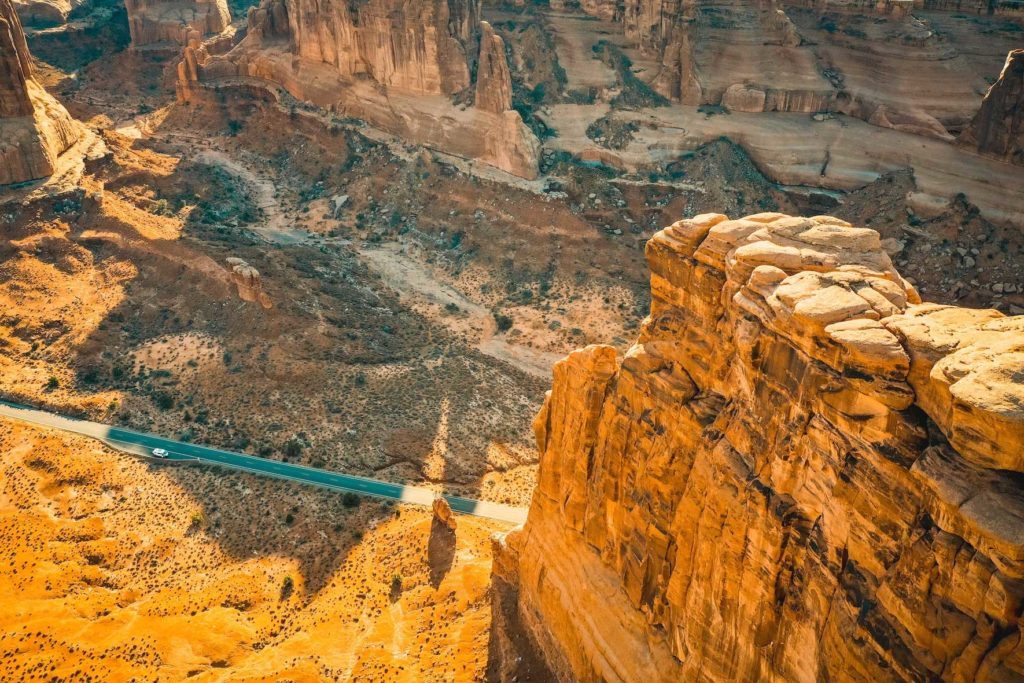
How to circulate inside the Arches National Park
To circulate inside Arches National Park, you can follow these guidelines:
Scenic Drive: The main road through Arches National Park is called the Arches Scenic Drive. This 19-mile (30.6 km) paved road takes you through the heart of the park, passing by many of the major attractions and trailheads.
Stops and viewpoints: Along the Scenic Drive, there are several designated stops and viewpoints where you can pull over, park your vehicle, and admire the scenery. These stops offer different perspectives of the park’s unique rock formations, arches, and landscapes. Be sure to check the park map for the locations of these viewpoints.
Parking areas: There are designated parking areas at various trailheads and attractions within the park. If you plan to hike or explore specific areas, park your vehicle in the designated parking lots and follow the trailheads to access the sites of interest.
Hiking trails: Arches National Park has numerous hiking trails that allow you to explore the park on foot. The trails range in length and difficulty, catering to different fitness levels and interests. Refer to the park map and information from the visitor center to choose the trails that suit your preferences.
Delicate Arch viewpoint: The Delicate Arch viewpoint is a popular spot within the park. There is a separate parking area for the Delicate Arch trailhead. From there, it’s a moderate 3-mile (4.8 km) round trip hike to reach the iconic Delicate Arch. It’s worth noting that the viewpoint for Delicate Arch can also be seen from a distance without hiking the trail.
Shuttle service (if available): During peak seasons, Arches National Park may implement a shuttle service to alleviate traffic congestion and provide easier access to the park’s attractions. If the shuttle service is available, you can park your vehicle at a designated parking area and use the shuttle to move between different stops within the park.
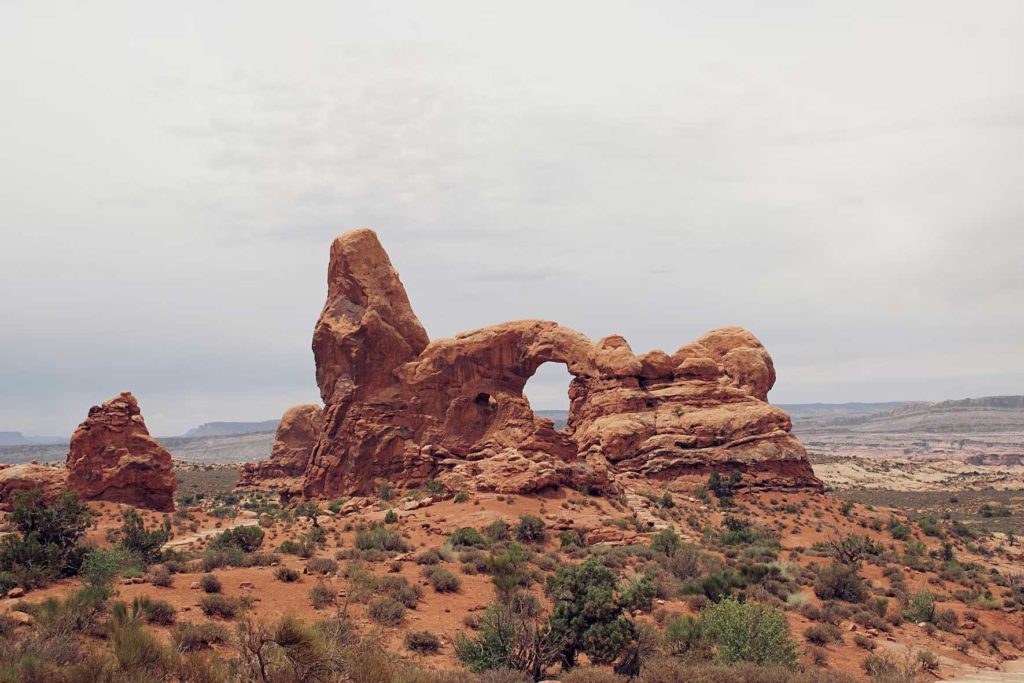
Where to stay
While Arches National Park does not have lodging facilities within the park boundaries, there are accommodations available in nearby towns.
Moab, Utah:
Moab is a popular town located just outside the entrance to Arches National Park. It offers a range of accommodations to suit different budgets and preferences. From luxury resorts to budget-friendly motels, Moab has something for everyone. You can find comfortable hotels, cozy bed and breakfasts, vacation rentals, and campgrounds in and around the town. Moab is also home to various dining options, outdoor gear stores, and other amenities to enhance your stay.
Camping Options:
For those seeking a more immersive experience in nature, camping is a great option near Arches National Park. The park itself has a developed campground called Devils Garden Campground, which offers a serene setting with stunning views. However, it’s important to note that reservations are required, and the campground tends to fill up quickly, especially during peak season. There are also numerous private campgrounds and RV parks in the Moab area that provide facilities like showers, hookups, and amenities for a comfortable camping experience.
Other Nearby Accommodations:
If you prefer staying slightly farther away from the park, you can explore accommodations in other towns within a reasonable driving distance. These include towns such as Green River, Monticello, and Blanding, which offer lodging options ranging from hotels to motels and lodges. While they may require a longer drive to reach Arches National Park, they provide a quieter atmosphere and often have their own unique attractions and landscapes to explore.
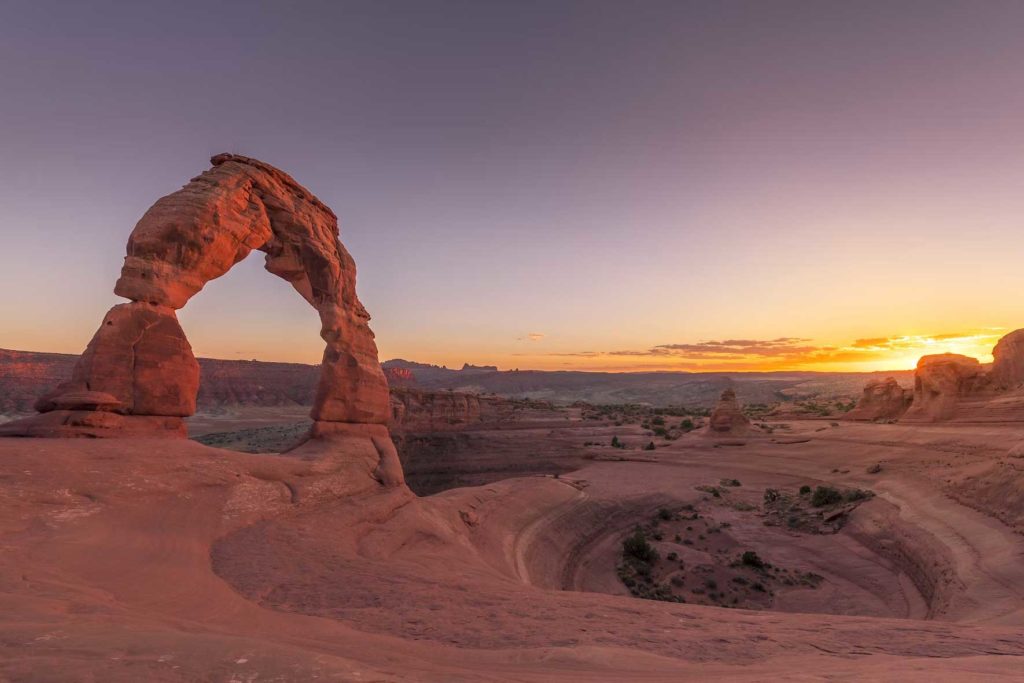
Where to eat
Within Arches National Park itself, there are limited dining options available. However, the nearby town of Moab offers a variety of restaurants, cafes, and other eateries to satisfy your hunger after a day of exploring.
Moab, Utah:
Moab is the closest town to Arches National Park and is known for its vibrant food scene. You’ll find a diverse range of culinary offerings here, from casual diners and family-friendly restaurants to upscale eateries. Whether you’re craving Southwestern cuisine, American classics, international flavors, or vegetarian and vegan options, Moab has something to please every palate. Many restaurants in Moab showcase local ingredients, creating dishes that capture the essence of the region. Additionally, there are numerous cafes and bakeries where you can grab a quick bite, enjoy a cup of coffee, or indulge in delicious pastries.
Visitor Center Snack Bar:
Within Arches National Park, there is a snack bar located at the Visitor Center. While the options may be limited compared to a full-service restaurant, you can grab a quick snack, sandwich, or a refreshing beverage to fuel your adventure in the park. It’s worth noting that the offerings at the snack bar may vary, so it’s a good idea to check for any updates or changes.
Picnic Areas:
Arches National Park has designated picnic areas where you can bring your own food and enjoy a meal surrounded by the park’s natural beauty. These areas provide picnic tables, grills, and shade structures, making them ideal for a leisurely lunch or snack break. You can bring your own packed meal or stop by a grocery store or deli in Moab to gather supplies for a picnic.
Nearby Towns:
If you are exploring the area around Arches National Park or staying in towns like Green River, Monticello, or Blanding, you’ll find dining options there as well. While these towns may have a more limited selection compared to Moab, you can still find local eateries and restaurants offering a taste of the region.
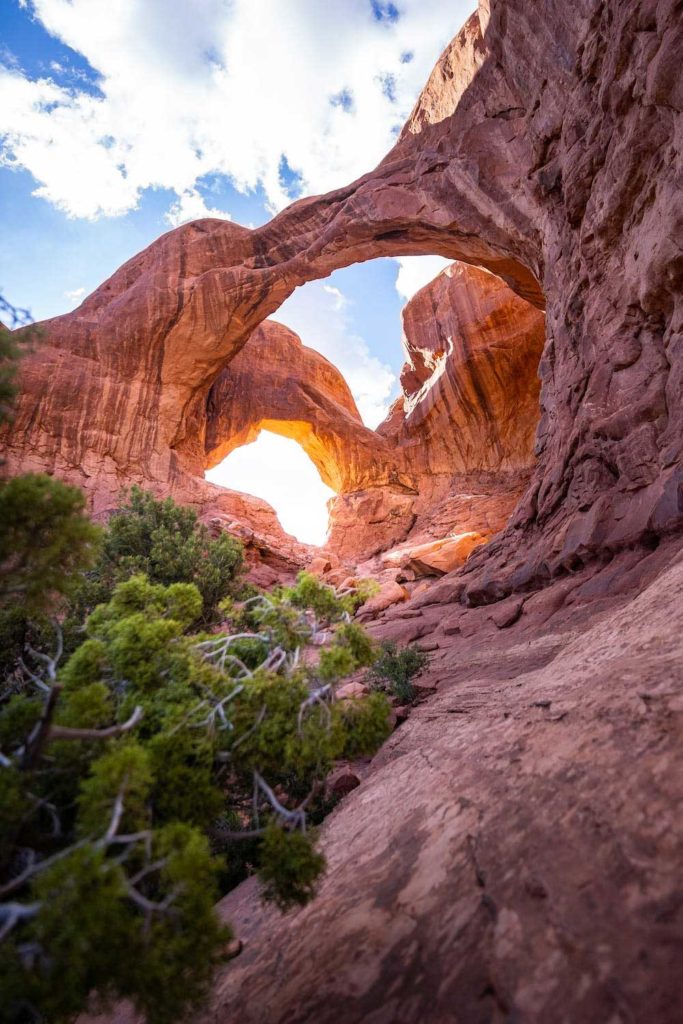
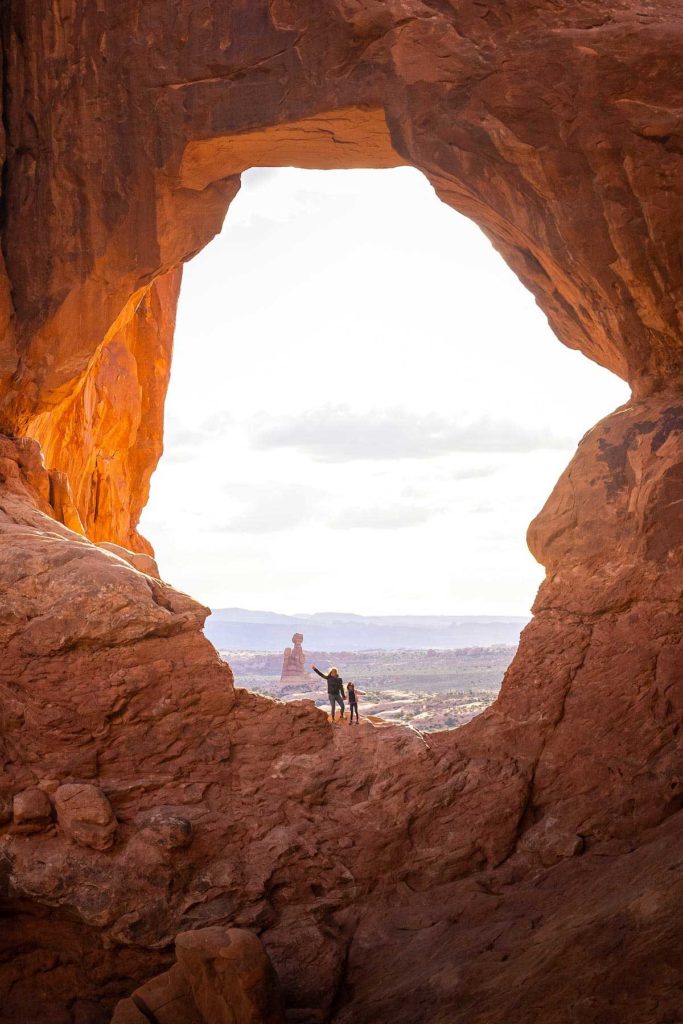
Finding a guide for Arches National Park
Arches National Park offers official guided tours and programs through its Visitor Center, which is located near the park entrance. These guided tours are led by park rangers and provide valuable insights into the park’s geology, ecology, and cultural history.
To get the most accurate and up-to-date information on guided tours, I recommend visiting the official Arches National Park website or contacting the park directly. The park’s website will provide details on any guided tours or programs that may be available during your visit, including their costs, schedules, and reservation requirements, if applicable.
Additionally, there are private tour operators and guides based in the surrounding area, such as Moab, that offer guided tours of Arches National Park. These tour operators provide a variety of tour options, including hiking tours, photography tours, and specialized tours tailored to specific interests. Prices for private tours can vary depending on the duration, group size, and services included. It’s best to research and contact different tour operators directly to inquire about their offerings and pricing.
Remember to plan ahead and make reservations for guided tours, as they can fill up quickly, especially during peak seasons.
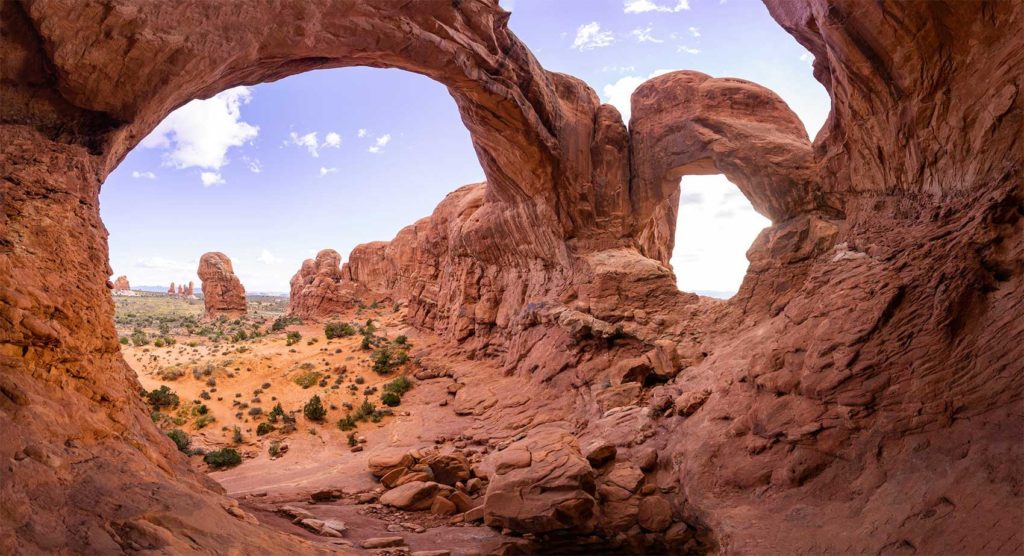
Safety and security in the park
Ensuring security and safety is important when visiting any national park, including Arches National Park. Here are some tips to help you have a safe and enjoyable experience:
Follow park regulations: Familiarize yourself with the park’s rules and regulations, which are in place to protect both visitors and the natural environment. Pay attention to signage, stay on designated trails, and respect any closures or restrictions.
Be prepared: Before entering the park, check the weather forecast and plan accordingly. Dress in layers and wear appropriate footwear for hiking or walking on uneven terrain. Carry essentials such as water, snacks, sunscreen, a hat, and a map of the park.
Stay hydrated: Arches National Park is located in a desert region with high temperatures, so it’s crucial to drink plenty of water to avoid dehydration. Carry an adequate supply of water with you, especially during hikes or outdoor activities.
Protect yourself from the sun: Apply sunscreen regularly, wear a hat, and consider wearing lightweight, breathable clothing that covers your skin to protect yourself from the sun’s harmful rays.
Wildlife encounters: Arches National Park is home to various wildlife species. Maintain a safe distance from animals and never approach or feed them. Remember that wildlife is best observed from a distance to avoid any potential harm.
Stay on designated trails: Straying off designated trails can lead to environmental damage and potentially dangerous situations. Stick to established paths to protect fragile desert ecosystems and ensure your own safety.
Be cautious of the terrain: Some trails and areas within Arches National Park may have steep drops, cliffs, or unstable surfaces. Take caution and stay aware of your surroundings at all times. Avoid getting too close to edges or precarious formations.
Check for updates: Before your visit, check the park’s website, social media, or contact the Visitor Center for any updates on trail conditions, closures, or safety advisories.
Emergency preparedness: Carry a first aid kit, a whistle, and a fully charged mobile phone with emergency numbers saved. Be aware that cellular service may be limited in certain areas of the park.
Leave no trace: Help preserve the park’s natural beauty by practicing “Leave No Trace” principles. Pack out all trash, dispose of waste properly, and respect the environment.
The official website for Arches National Park is https://www.nps.gov/arch/index.htm
See all our travel guides.


